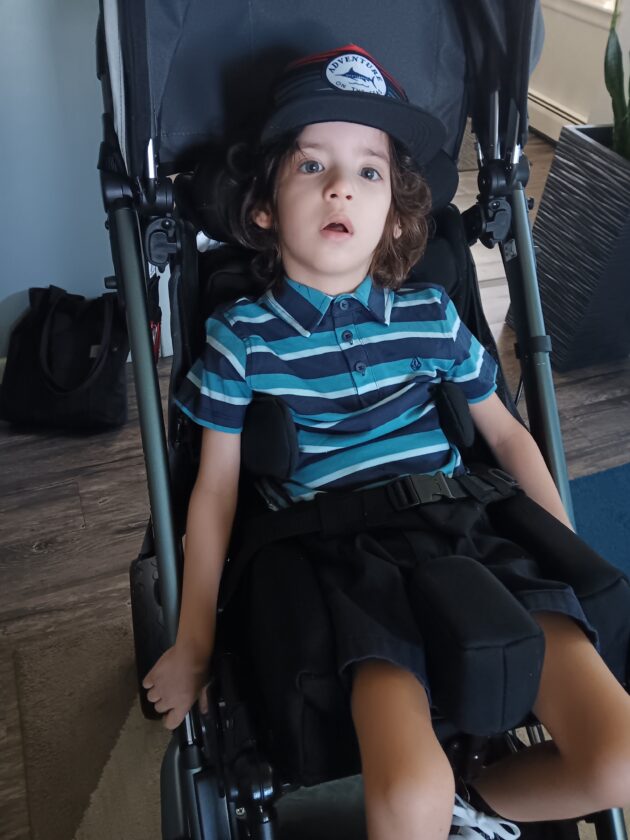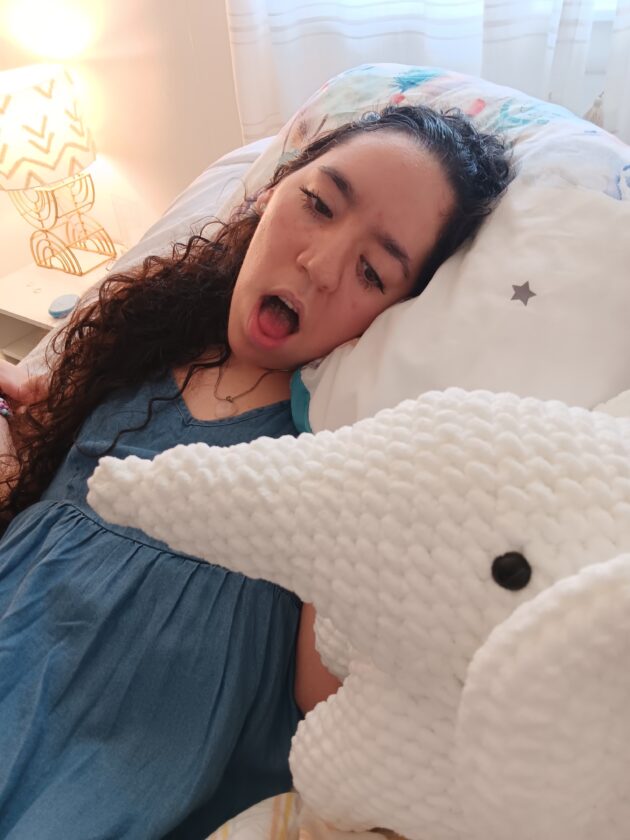Gladys Soto and Frank Diaz are pictured with their four children: Zania, Dioan, Ian and Alec. Zania, 19, and Alec, 5, both have a rare genetic disorder that affects the brain.
A helpless child is one of the most heartbreaking things in the world to see. Gladys Soto and Frank Diaz have been at the forefront of this tragic scenario for almost two decades.
But now, thanks to recent medical advances, the couple hopes things could change for two of their four children who are battling a rare brain disease.
Gladys Soto and Frank Diaz moved to the United States from Puerto Rico in 2006 to care for their daughter, Zania, who had a rare genetic disorder affecting an area of the brain called FRRS1L. The family finally settled in Dunkirk in 2017.
Gladys and Frank have been married for nearly 30 years. Together, they have four children: Zania, Dioan, Ian and Alec. Zania is the eldest, at 19, while Alec, 5, is the youngest. The genetic condition FRRS1L is present in Zania and Alec, but not in Dioan, 16, or Ian, 9.
The genetic disorder FRRS1L impacts brain function because messages in the brain do not pass from one cell to another. The disorder causes epilepsy, abnormal movements called progressive dyskinesia, developmental delay, diffuse hypotonia, loss of cortical and cerebellar volume, and a progressive loss of responsiveness to the environment.

Alec Diaz, 5, has the genetic disease FRRS1L, a rare disease that affects the brain.
The latest research shows that children born with this disorder have developmental delays from birth to age two. Although delayed, abilities develop gradually over the first two years of life. But then, at the age of two, the seizures lead to regression and a sudden loss of abilities and functions.
At first, Zania showed only slight delays in her motor skills, which were treated with physiotherapy. But at about 18 months, Zania would not stop crying at night. The next day, she showed uncontrolled movements in her hands. After a week of continuous movements, Zania began to lose strength in her neck. She could no longer hold her toys in her hand, stand up without support, or even eat on her own.
“It was very painful to watch and it was confusing because we didn’t know what was happening to him,” said his mother, Gladys Soto.
The family visited a neurologist in Puerto Rico, but all of the tests Zania performed failed to determine the symptoms of her illness. The family was therefore invited to travel to the United States to get a diagnosis. After arriving in the United States, Zania suffered a severe seizure that led to respiratory failure.
“We were heartbroken. It felt like our world was crumbling before our eyes. ” said Gladys Soto.

Zania Diaz, 19, has the genetic disorder FRRS1L, a rare disease that affects the brain.
Zania was diagnosed with generalized epilepsy, but the cause of the seizures and loss of motor skills remained unclear, even after a visit to Children’s Hospital of Philadelphia. The family then moved to Massachusetts so Zania could be treated at Children’s Hospital in Boston.
Zania underwent tests and treatments for 11 years, but her condition did not improve. All her blood tests came back normal, but the seizures and loss of motor skills were still present. She lived most of her life as a quadriplegic.
The family then moved to Dunkirk in 2017 to settle down permanently, while doing their best to treat Zania’s epileptic seizures. Shortly after moving to Dunkirk, Gladys became pregnant with her fourth child, Alec. After the birth, Alec seemed healthy and was hitting milestones like his siblings.
“I was happy because he was healthy” Gladys said.
But one night, Alec wouldn’t stop crying, just like his older sister had done nearly two decades before.
“Again, our world has been broken” said Gladys. “It was very difficult to see and accept that what was causing all these medical problems for my daughter was going to have the same effect on my son. We cried, we cried a lot. It hurts so much to the core.”
Alec began to lose his ability to hold his head up after his first seizure. Soon, he could no longer stand or eat on his own. He lost his ability to play and laugh about a week after his first seizure.
“Like my daughter, it was painful to see how they were losing their abilities and independence,” said Gladys.
Alec was taken to Dr. Cynthia Beatty, a neurologist at Oishei Children’s Hospital in Buffalo. Gladys told Dr. Beatty Zania’s story, and at first, she gave the same diagnosis as the other doctors. But this time, Alec was given a genetic test, a luxury not available at Zania’s age.
The test revealed the genetic mutation of the FRRS1L gene in the brain. The same test was then performed on Zania, which revealed the same genetic mutation. Zania was officially diagnosed with a FRRS1L genetic mutation when she was 16 years old.
“Finally, after 16 years, we got a real diagnosis for my daughter.” Gladys said.
From there, the family began searching for more information about the disease, but the rarity of the genetic mutation, coupled with the newness of the tests to identify it, resulted in very few examples to compare to . Gladys eventually discovered an article in the Journal of Medicine referencing research conducted in Germany on this disease. The treatment was given to mice in which gene replacement therapy restored function to mice with the disease.
Studies are also being conducted in Texas by Dr. Berge A. Minassian, professor in the departments of pediatrics, neurology and neuroscience at the University of Texas at Southwestern. He is division chief of child neurology and on the faculty of the Children’s Medical Center Research Institute at the University of Texas at Southwestern. Both Zania and Alec were recruited to participate in the research.
Additionally, the Finding Hope for FRRS1L Foundation was created by families of children with the genetic disease FRRS1L. Finding Hope for FRRS1L is seeking donations to continue to fund studies into treatment options for the disease. The organization is seeking to raise $1.1 million by December 2024 to move into the next phase of research, including toxicology, to prove the treatment is safe.
Zania and Alec are among about 20 children or young adults whose struggles with the genetic disease FRRS1L are documented on FRRS1L.org.
“We need to let the world know that they can change my children’s world with a cure. » said Gladys.
Donations can be made online at www.frrs1l.org/cure.